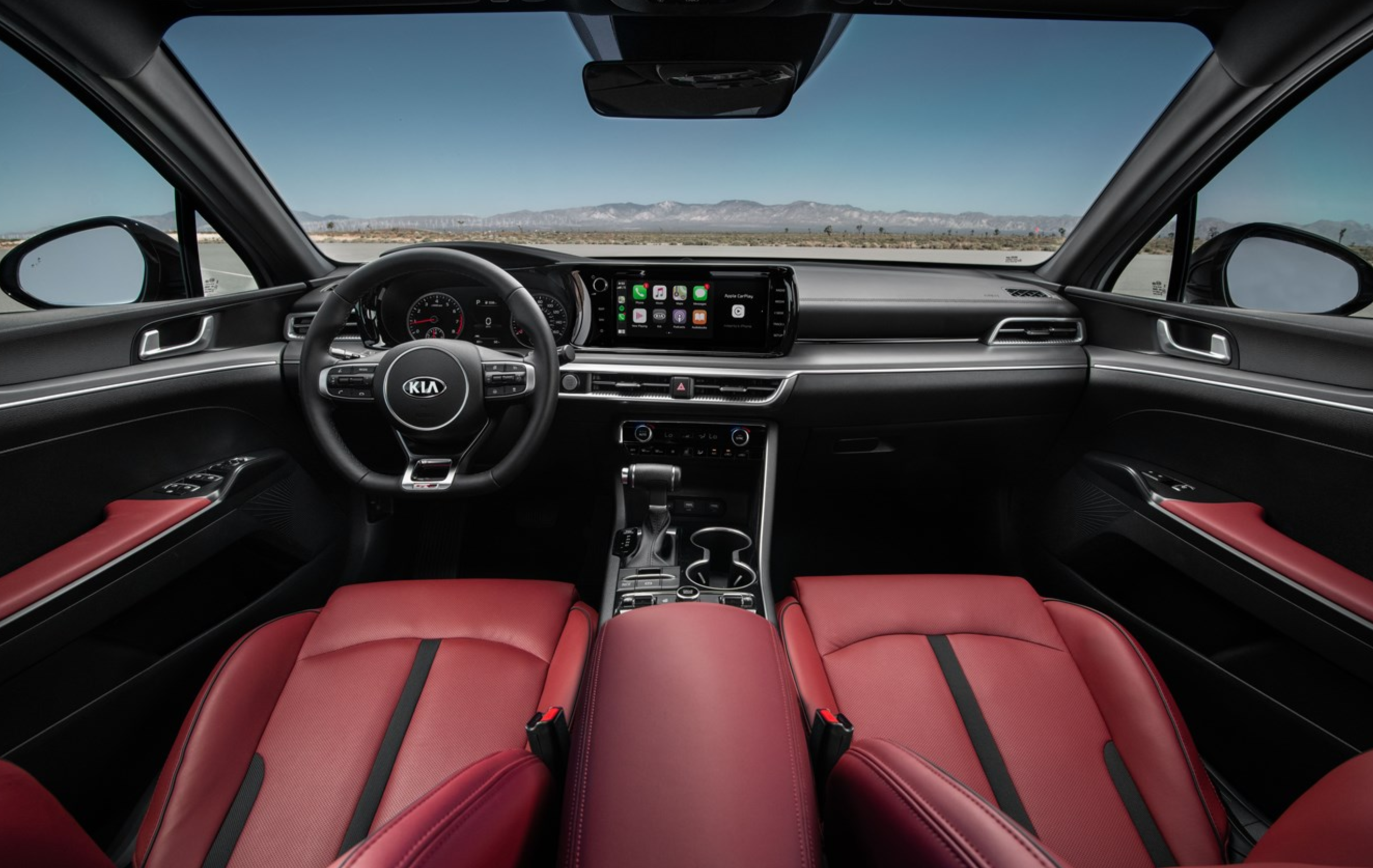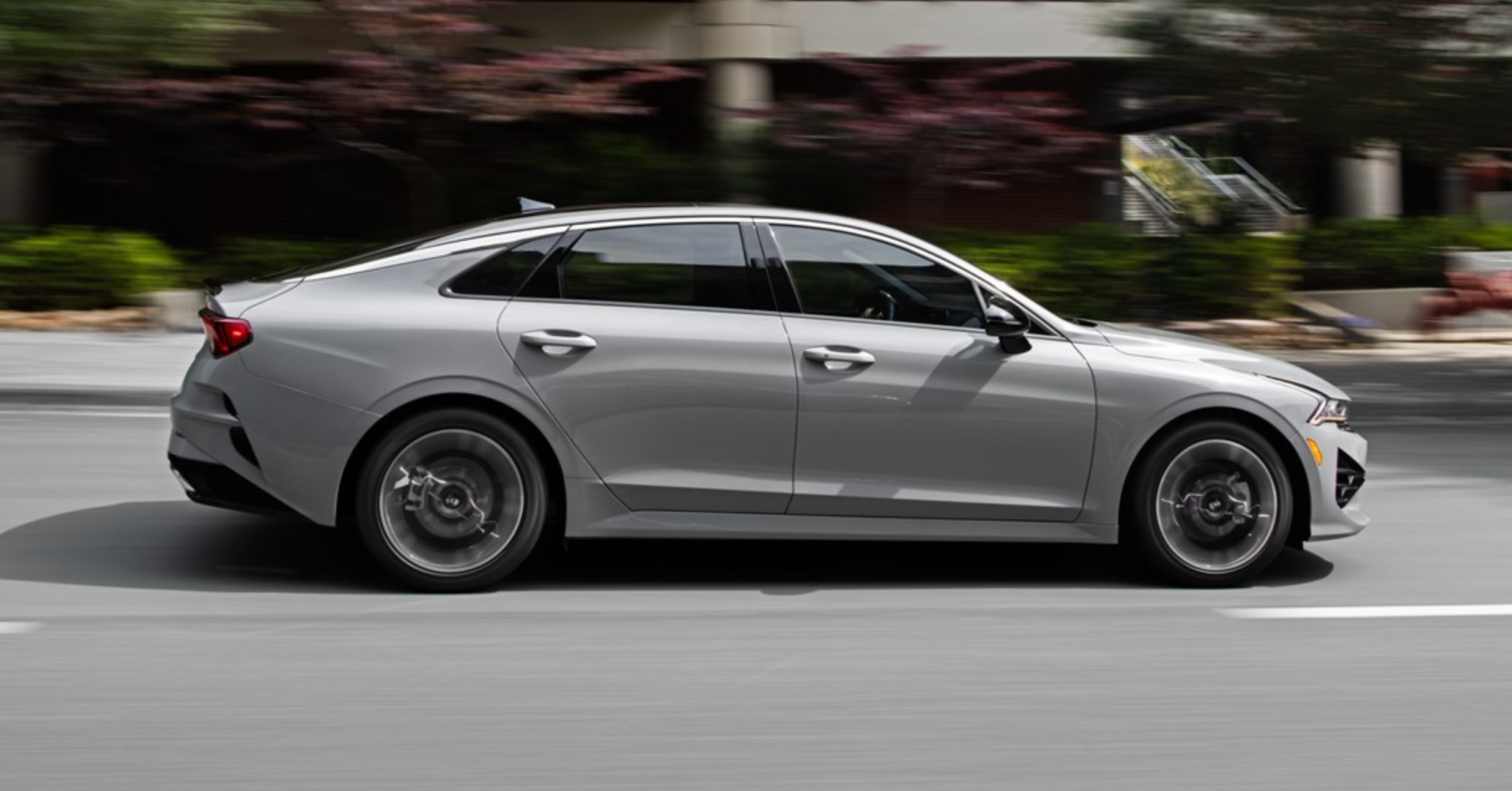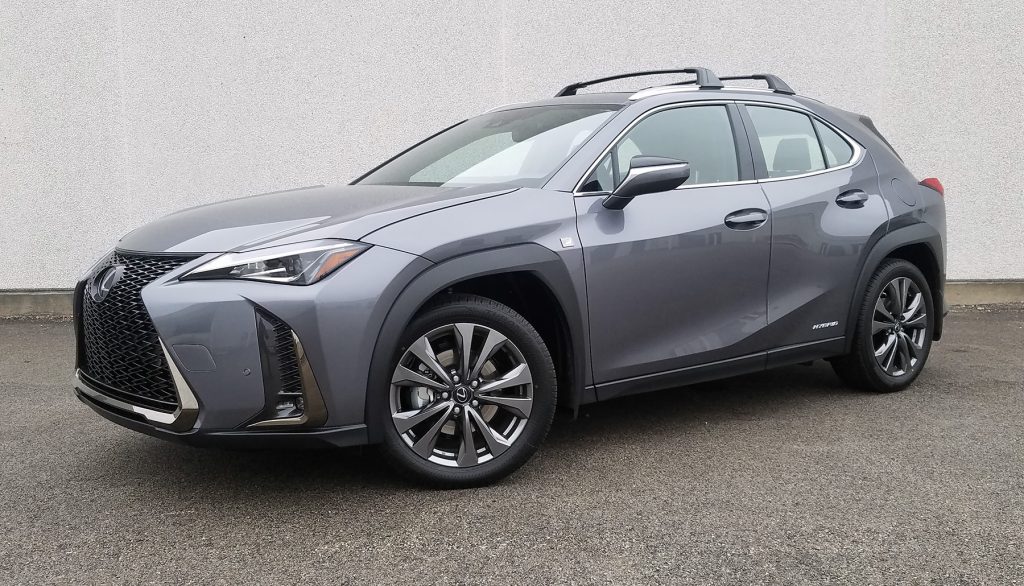
2021 Lexus UX 250h F Sport in Nebula Gray Pearl

Class: Premium Subcompact Crossover
Miles driven: 304
Fuel used: 9.9 gallons
Real-world fuel economy: 30.7 mpg
Driving mix: 60% city, 40% highway
EPA-estimated fuel economy: 41/38/39 (city/highway/combined)
Fuel type: Regular gas
| CG Report Card | |
|---|---|
| Room and Comfort | B |
| Power and Performance | C |
| Fit and Finish | B+ |
| Fuel Economy | B |
| Value | B |
| Report-card grades are derived from a consensus of test-driver evaluations. All grades are versus other vehicles in the same class. Value grade is for specific trim level evaluated, and may not reflect Consumer Guide’s impressions of the entire model lineup. | |
| Big & Tall Comfort | |
| Big Guy | B |
| Tall Guy | B |
| Big & Tall comfort ratings are for front seats only. “Big” rating based on male tester weighing approximately 350 pounds, “Tall” rating based on 6’6″-tall male tester. | |
| Drivetrain | |
| Engine Specs | 181-hp 2.0-liter |
| Engine Type | 4-cyl hybrid |
| Transmission | CVT automatic |
| Drive Wheels | AWD |
Base price: $37,100 (not including $1025 destination charge)
Options on test vehicle: Wireless charger ($75); windshield de-icer ($100); auto-dimming inner mirror w/ compass and Homelink ($325); head-up display ($500); Intuitive Parking Assist ($565); power liftgate with kick sensor ($600); F Sport Premium Package ($975); F Sport heated steering wheel w/ paddle shifters ($150); illuminated door sills ($425); carpet cargo mat ($110); roof-rack cross bars ($400); mudguards ($165); door-edge guards ($150)
Price as tested: $42,665
Quick Hits
The great: Build quality; good dollar value compared to most class competitors
The good: Distinctive styling inside and out; quiet cabin
The not so good: Cramped rear seat; so-so cargo space; finicky infotainment controls; roof design compromises rear visibility; F Sport trim more for looks than actual performance; disappointing-for-a-hybrid observed fuel economy in cold weather
More UX price and availability information
CG Says:
Roughly a year ago, when Consumer Guide tested a 2020 Lexus UX 250h Luxury, we posed this question: What really is “luxury” in an automobile? Now, having spent time with a 2021 UX 250h F Sport, we have the same query about the concept of “sport.”
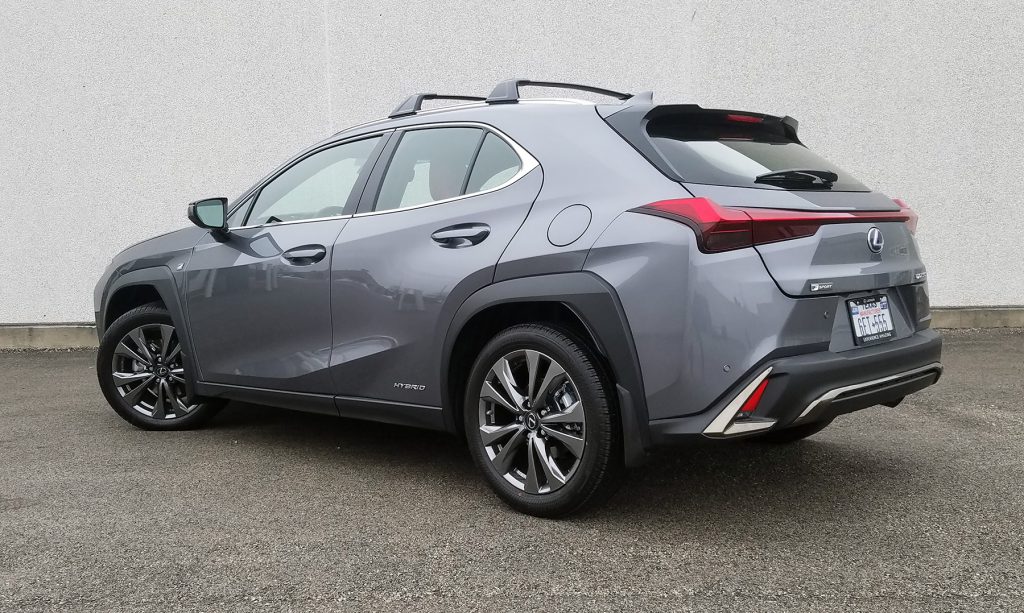
The UX’s radically sculpted looks aren’t for everyone, but its tidy exterior dimensions make it a good urban runabout.
Our takeaway from testing the high-line version of the premium-subcompact crossover SUV from Lexus was that luxury is more or less how a manufacturer defines it. That seems to be true about sportiness as well. Where the UX Luxury staked its claim based more on accumulated standard features than on a plush ambience, the F Sport invests more in an athletic image than in any clear performance advantage.
Test Drive: 2021 Mini Cooper SE Countryman ALL4 PHEV
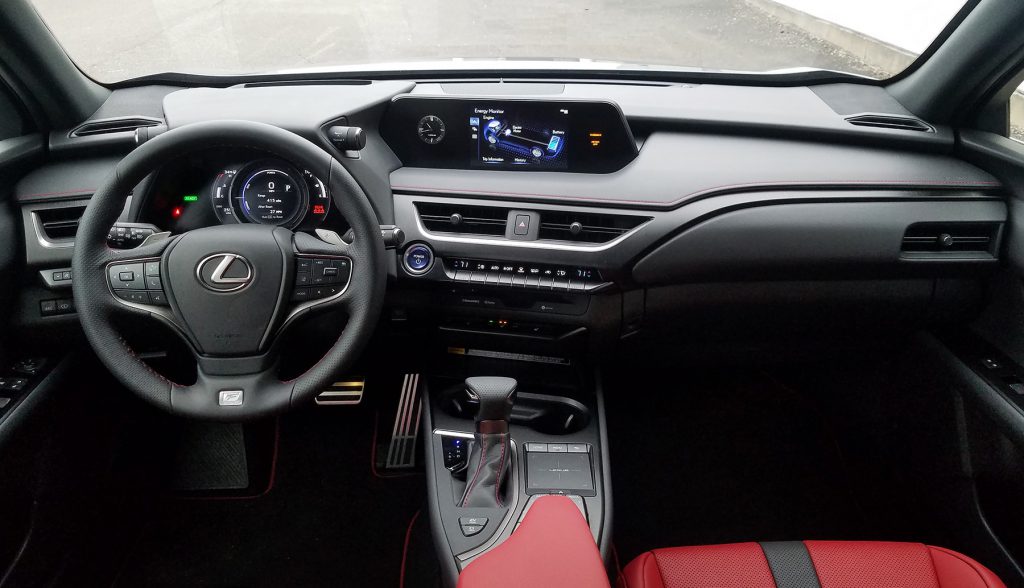
The UX’s cabin has a swoopy dashboard layout and excellent fit and finish. UX 250h models include a graphic readout that displays real-time power delivery from the gasoline engine and electric motor.
The 250h F Sport has the same hybrid powerplant (2.0-liter 4-cylinder gas engine, two electric motors to drive the rear wheels at speeds below 44 mph, 181 total system horsepower), continuously variable transmission, selectable drive modes, and all-wheel drive as the UX’s base and Luxury versions. Thus, pleasant road manners and the seat-of-the-pants sense of performance—CG testing of a 2019 250h F Sport with the same powerteam clocked 0-to-60 mph in 8.4 seconds—don’t vary much between them.
First Spin: 2021 Mazda CX-30 2.5 Turbo
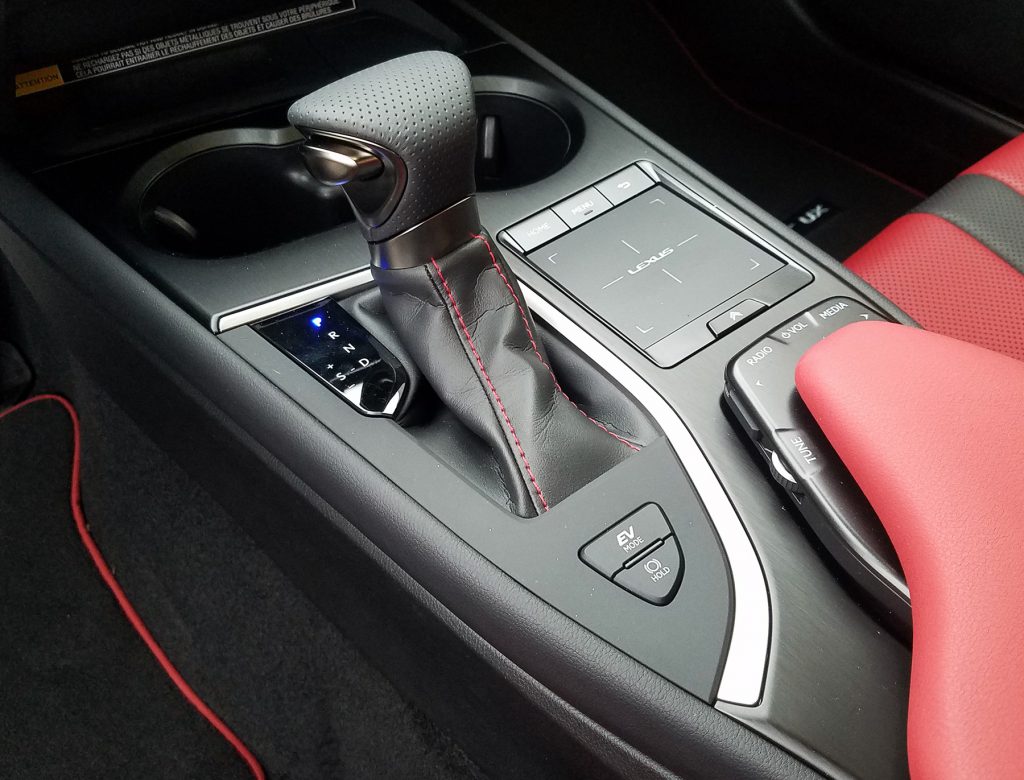
The UX’s Remote Touch touchpad infotainment interface is tricky to use while driving. We’re not big fans of the thumbwheel audio controls located on the leading edge of the center-console armrest either.
How Lexus defines sport in the F Sport is mostly through a specific split-five-spoke design for the 18-inch alloy wheels that are standard throughout the UX lineup, modified front and rear bumpers, diamond-mesh grille surface, LED fog and cornering lamps, stouter-bolstered sport seats, perforated-leather-wrapped F Sport steering wheel and shift knob, “performance-inspired” instrument display, 8-inch vehicle-information display, active sound control, and aluminum front-door scuff plates and pedal faces. Only the inclusion of paddle shifters and a tuned suspension give the “physical plant” a little stronger sense of purpose.
It’s a smaller complement of standard convenience features that mostly separates the 250h F Sport, which sells for $38,125 with delivery, from the hybrid Luxury that starts at $2700 more. Both have “NuLuxe” leatherette upholstery. Door panels lack sculpting or detailing, and the tops of those in back are hard, unyielding plastic. There’s but one rear-seat storage pouch, attached to the back of the front passenger seat. Rear doors lack storage pockets and bottle holders. At least there is well-executed fit and finish to those things that Lexus has chosen to include. Passenger accommodations are identical: comfortable space and seating up front, but a more restrictive rear seat. Similarly, all UX hybrids suffer from a cargo floor that’s raised to clear the hybrid battery, cutting load capacity and causing the 60/40-split second-row seats to rest below the level of the deck when they are folded. Note that a new standard feature for all ’21 hybrids is an adjustable deck board for the cargo bay.
Quick Spin: 2021 Chevrolet Trailblazer RS
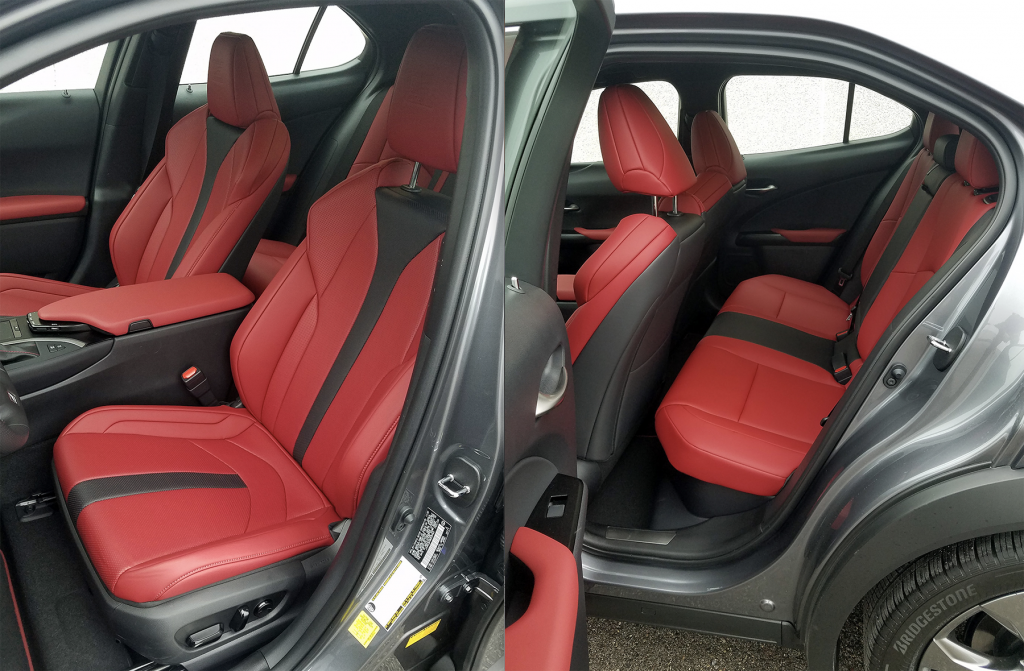
The available Circuit Red upholstery makes for an especially sporty interior ambiance. There’s good space for even big-and-tall occupants in the front seats, but the back seat is stingy in terms of both legroom and headroom.
There is the same Lexus Remote Touch Interface for the infotainment system, with its central touchpad operation, of which we’re hardly fans. (It’s hard to work precisely in a moving car.) Operation of the automatic dual-zone climate system is handled by clearly marked buttons, though we’d prefer direct-setting dials to input desired temperatures and fan speed. For ’21, blind-spot and rear cross-traffic alerts are standard across the board, augmenting the existing Lexus Safety System+ 2.0 that includes forward-collision warning and mitigation with pedestrian detection, lane-keep assist, adaptive cruise control, road-sign assist, and automatic high-beam headlights.
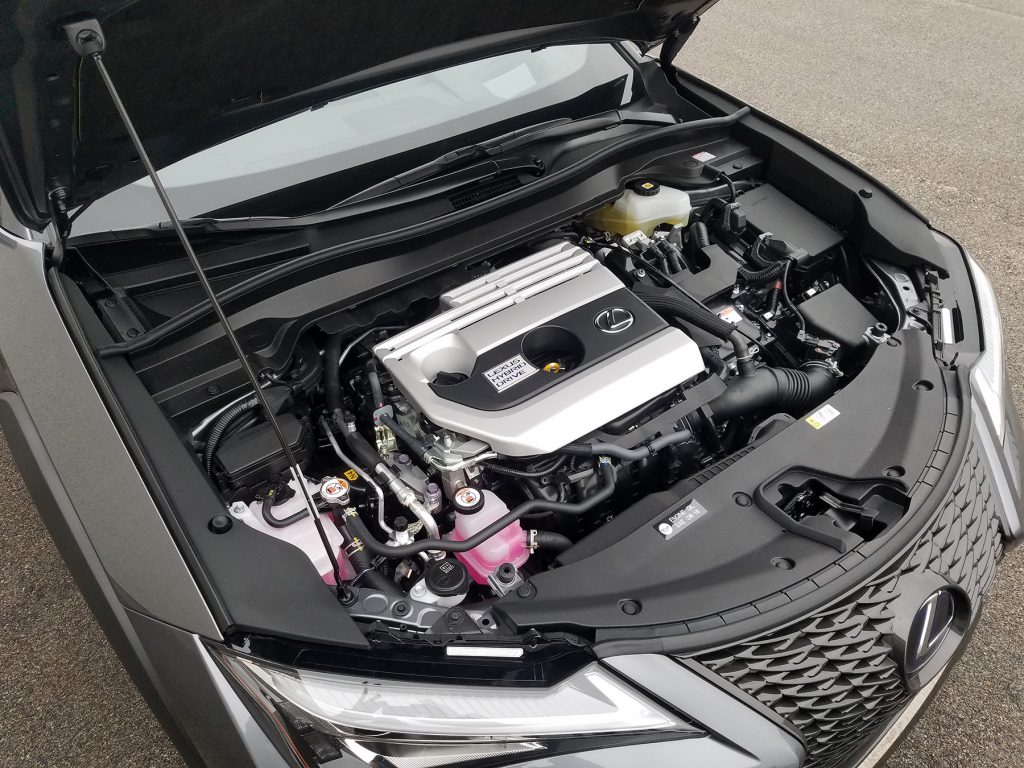
The UX 250h is powered by a 2.0-liter 4-cylinder engine paired with a CVT automatic transmission and two electric motors for a total output of 181 hp.
One unfortunate departure from past experience displayed by our F Sport tester was in fuel economy. In a stretch of harsh winter weather, we averaged 30.7 mpg with 59 percent of our driving in city-type operation. That’s way off the EPA combined estimate of 39 mpg, and far from the 38-plus our editors recorded in their tests of UX hybrids in 2019 and ’20.
UX has the only hybrids found in the premium subcompact SUV class. Any 2021 UX 250h costs $2200 more than a front-drive, gas-engine UX 200 of comparable trim level, but on the whole starting prices are attractive for the segment, and with the chance to add desirable options—even for the base model that makes no claims of being luxurious or sporty.
Test Drive: 2020 Lexus UX 250h Luxury
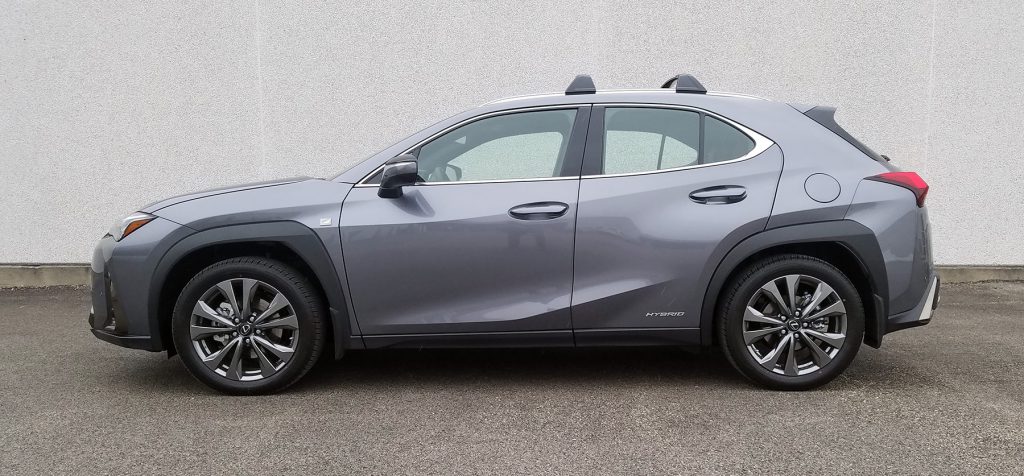
The Lexus UX is more about style than rear-seat-passenger and cargo space, but it’s more affordable when similarly equipped than most of its rivals, and it offers the only “full-hybrid” model in the premium subcompact SUV class.
Listen to the very entertaining Consumer Guide Car Stuff Podcast
2021 Lexus UX 250h F Sport Gallery
(Click below for enlarged images)
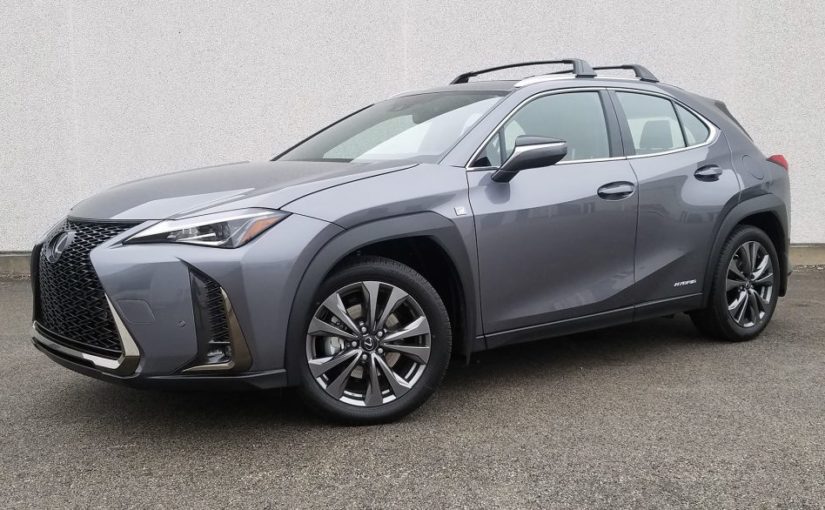
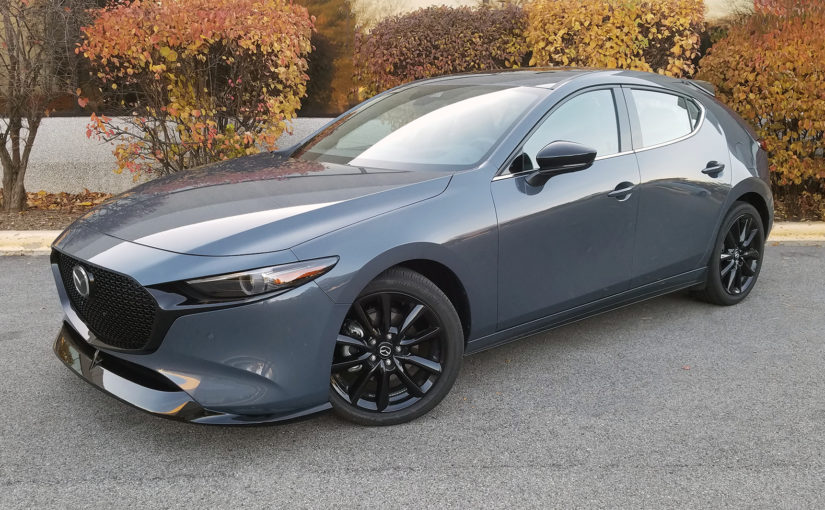
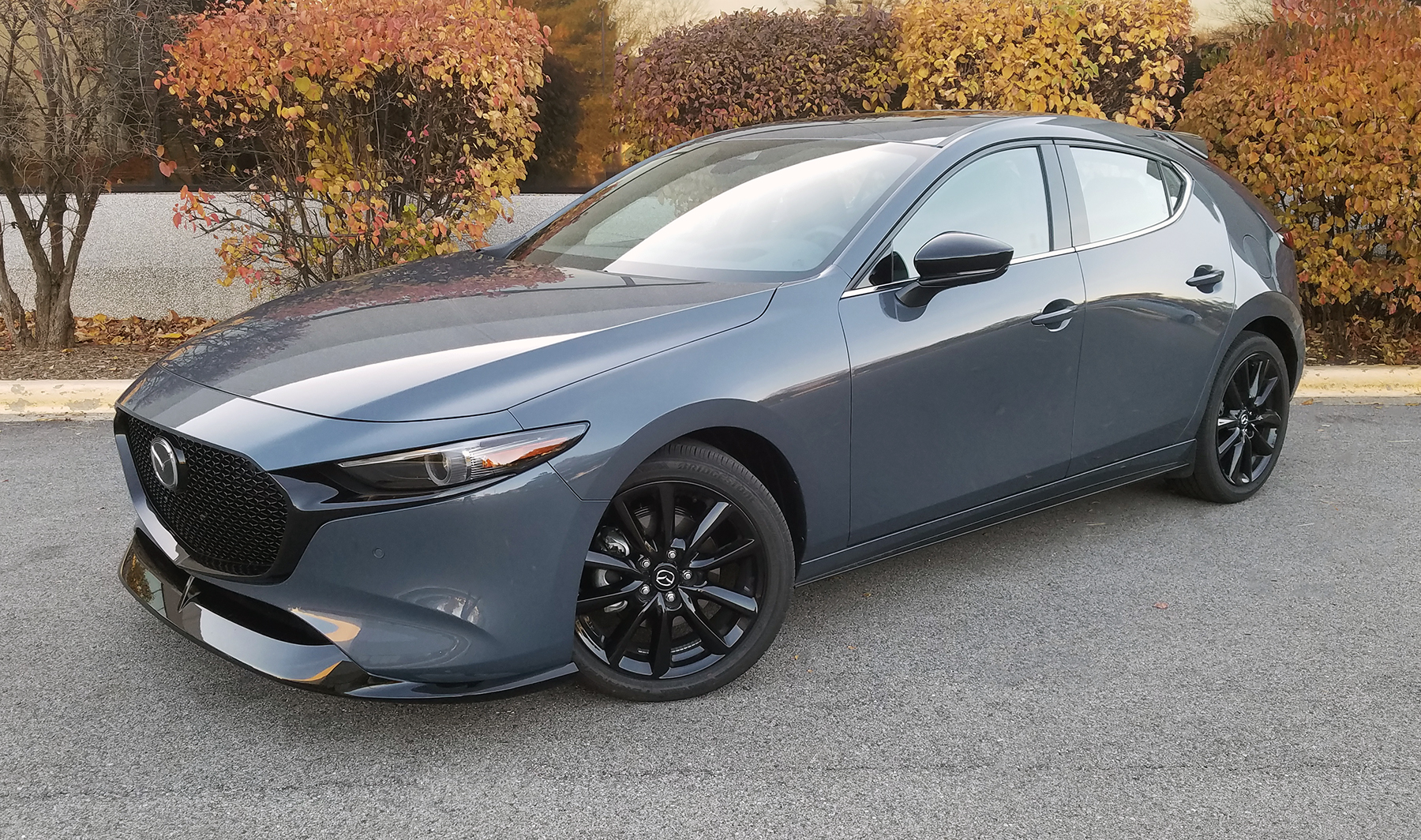

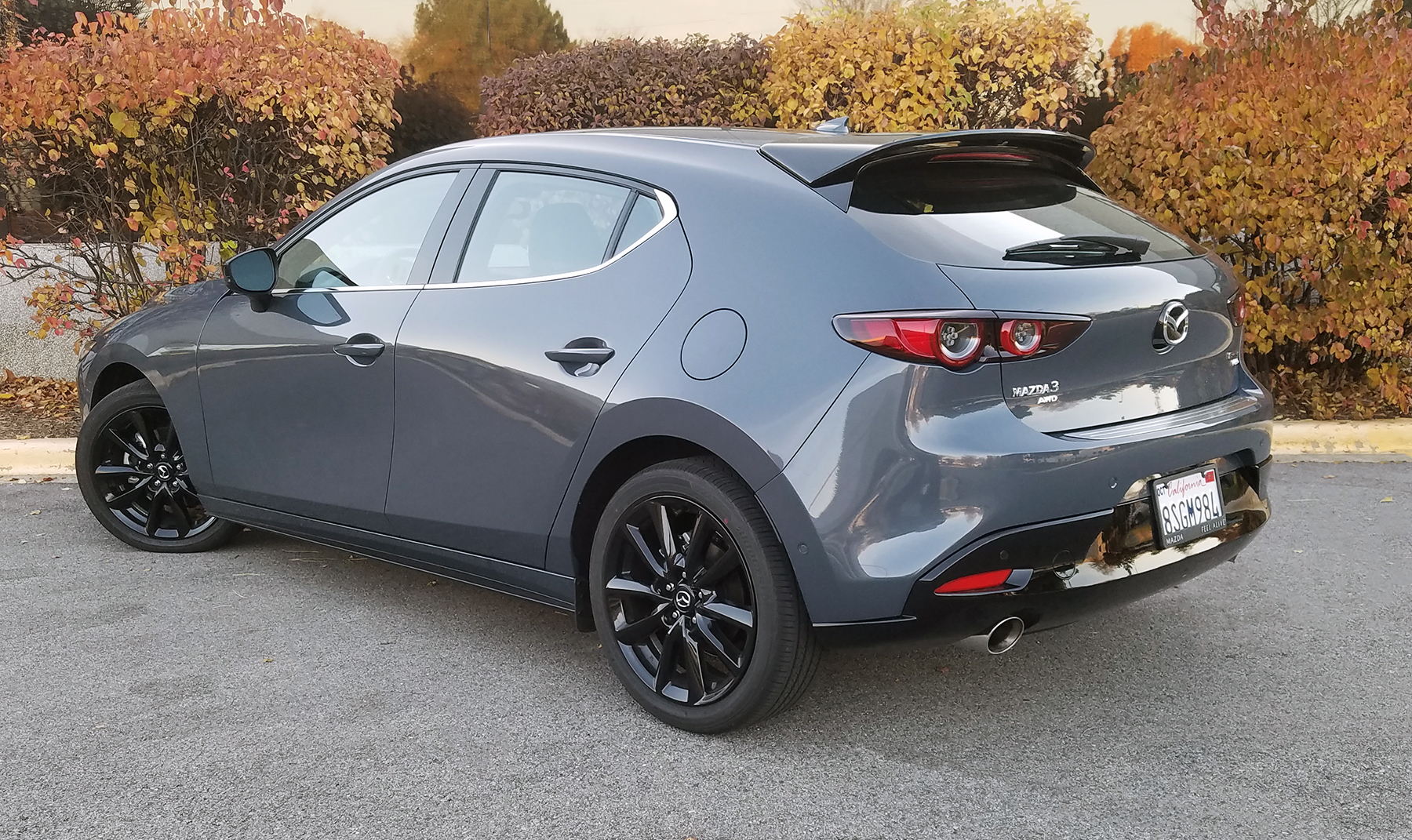

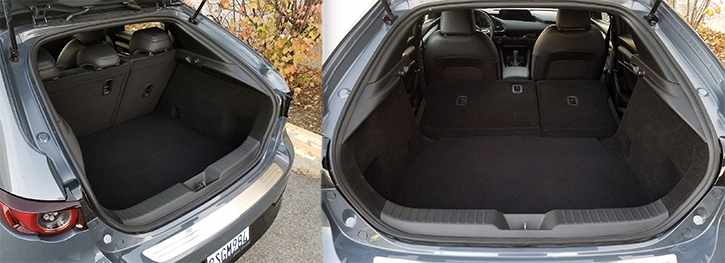

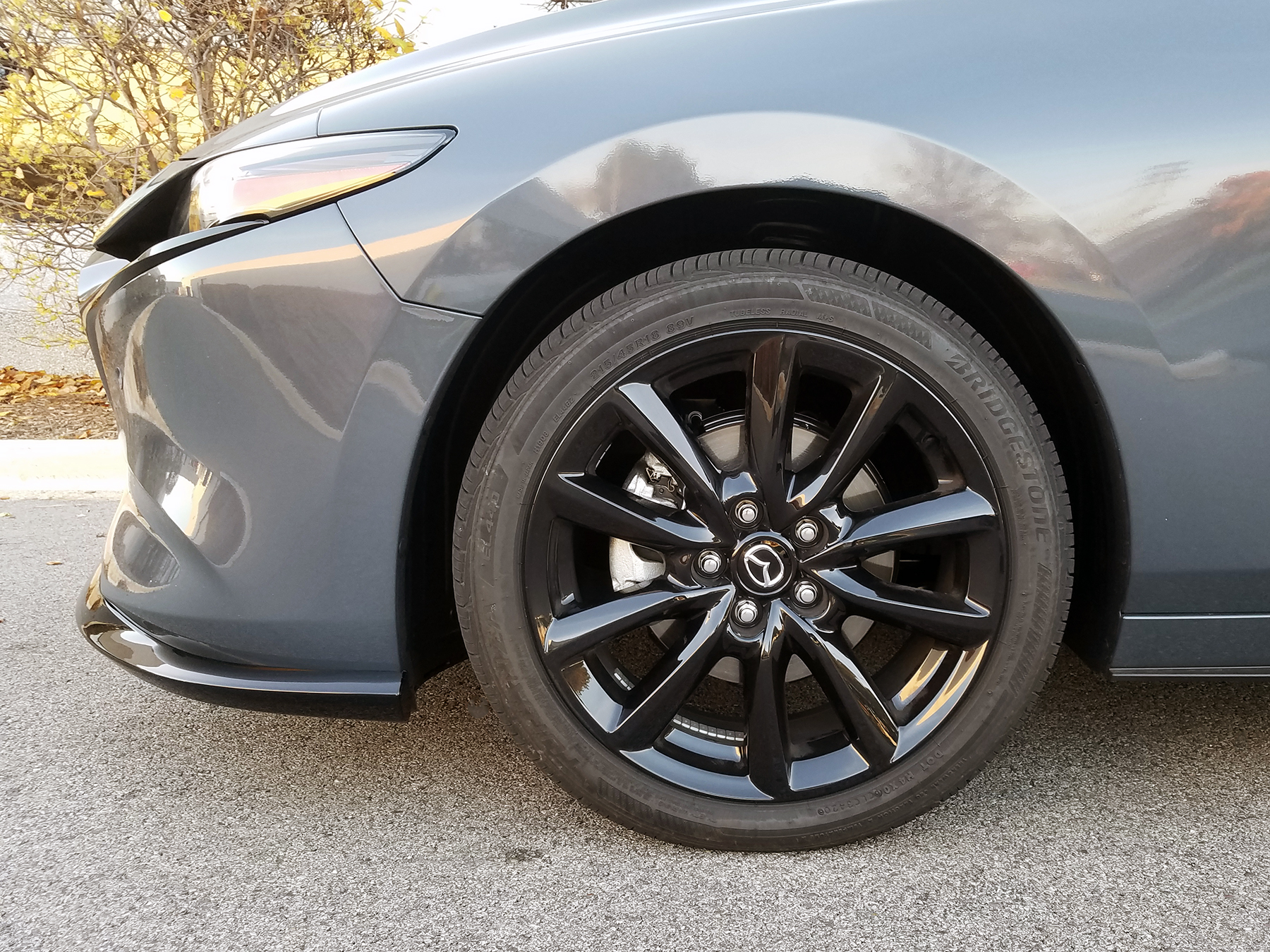
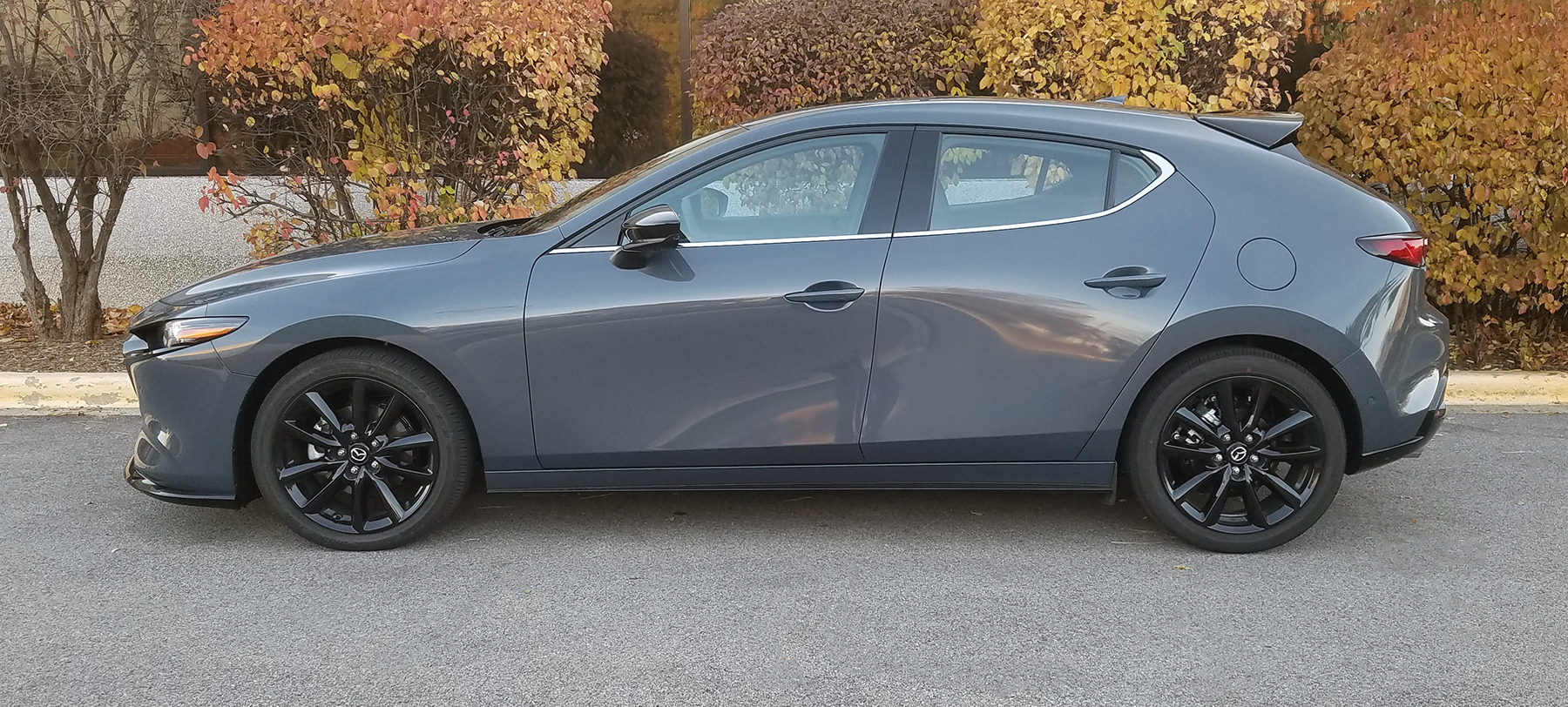
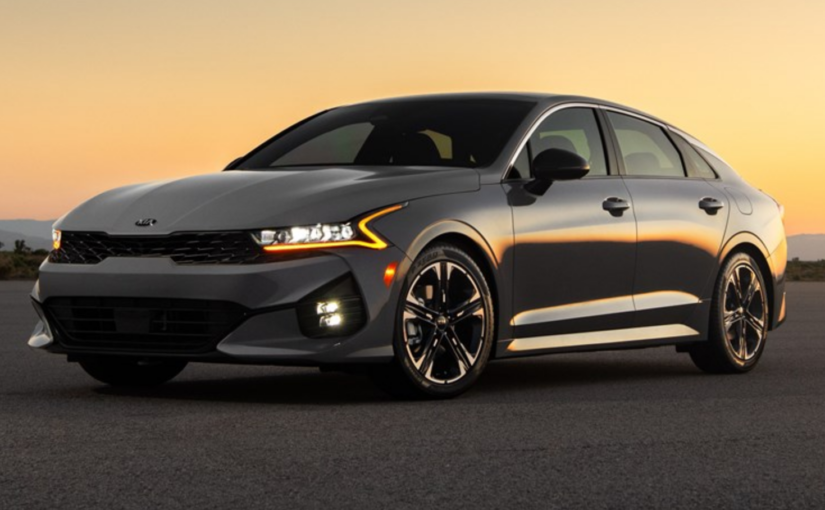
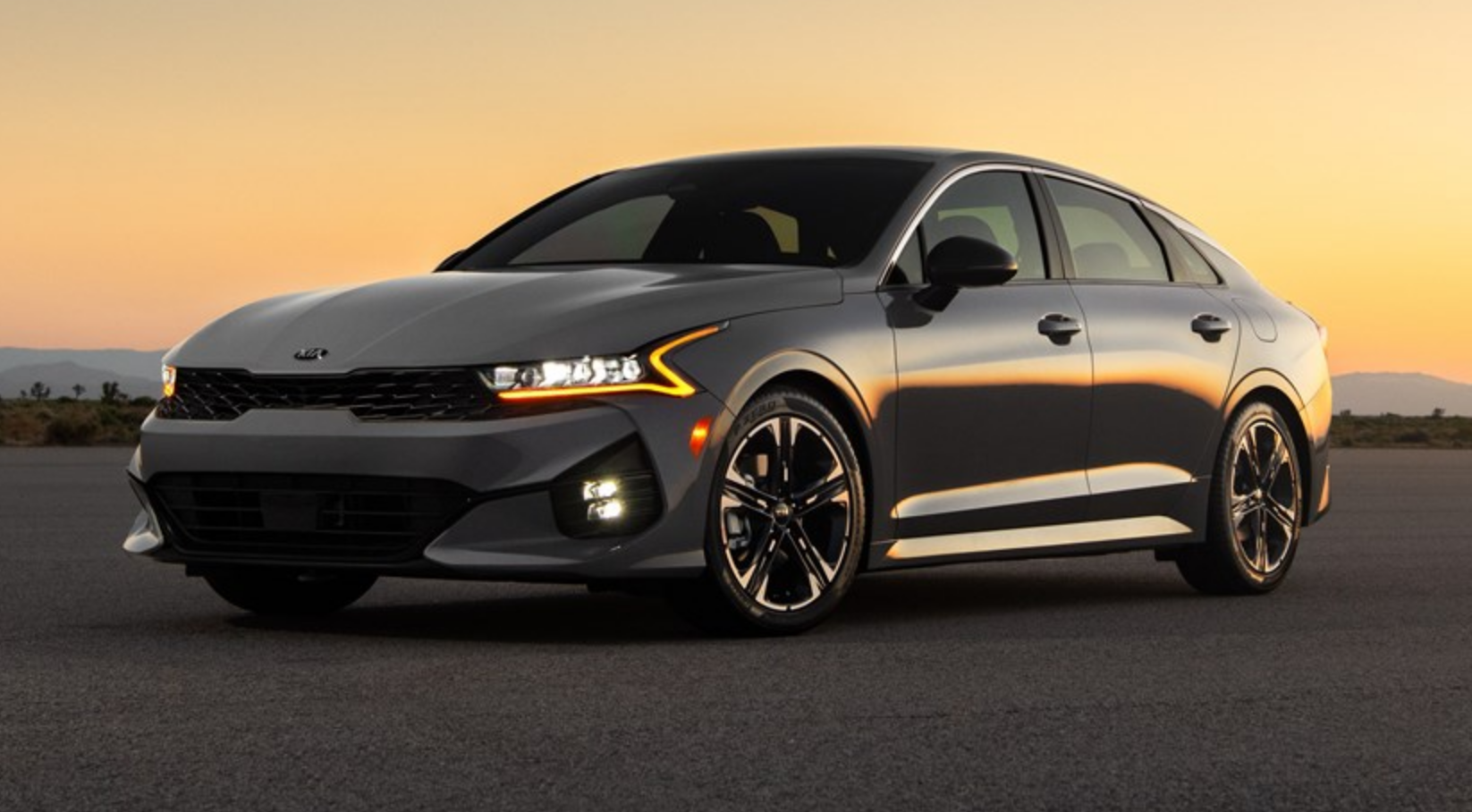
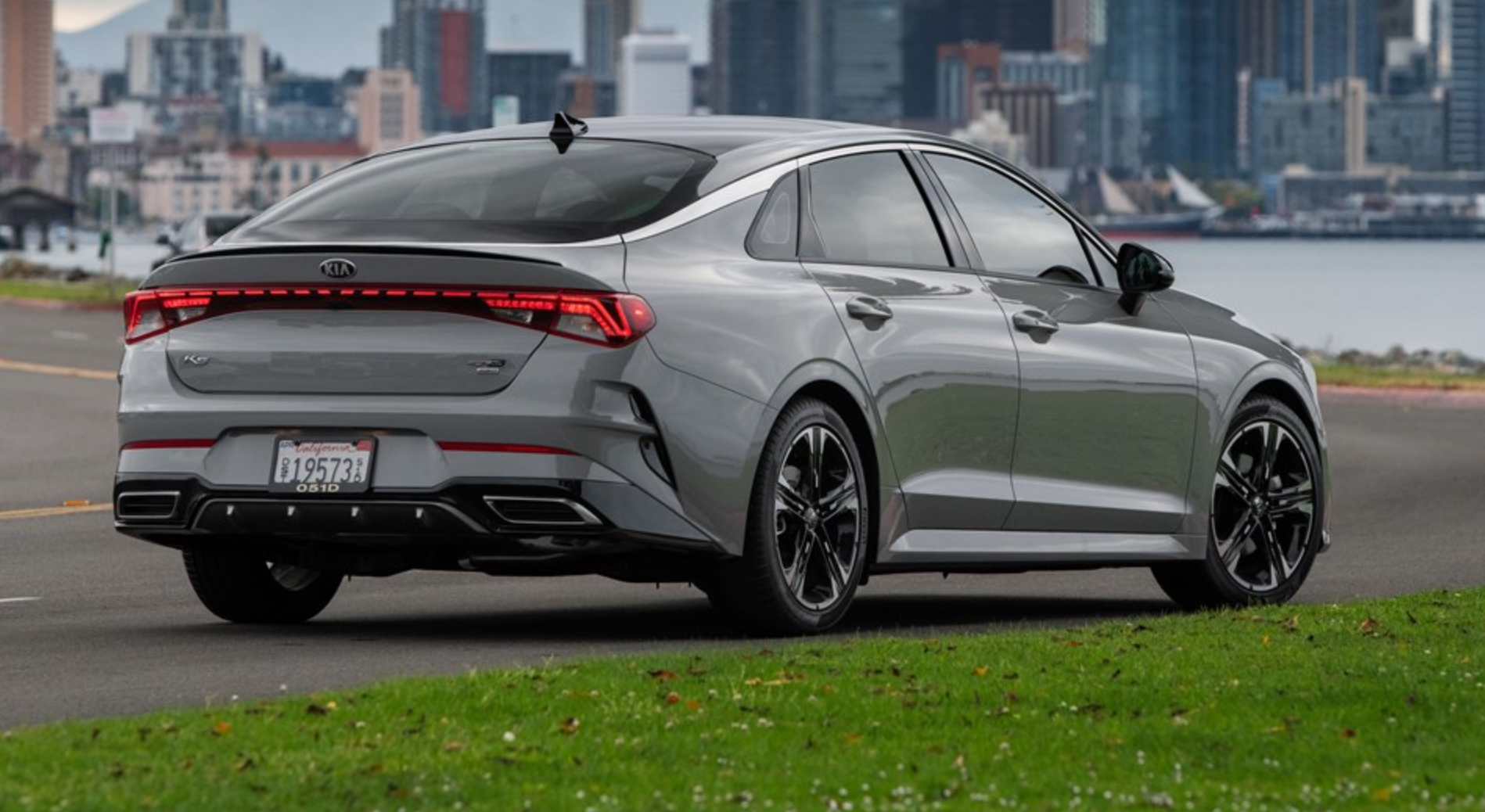
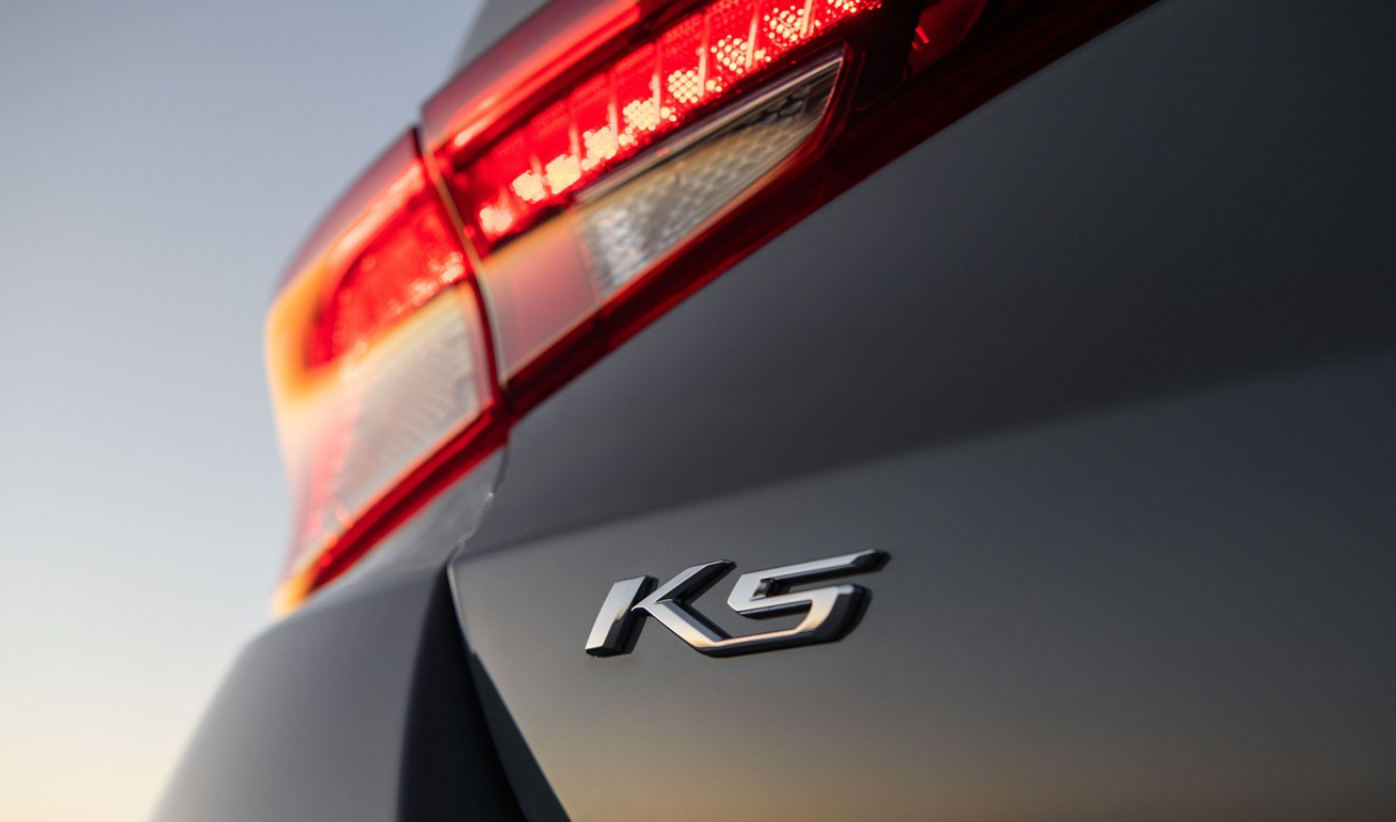 The base engine, which comes in LX, LXS, GT-Line, and EX models, is a turbo 1.6-liter 4-cylinder that makes 180 horsepower and is paired with an 8-speed automatic transmission. Optional on LXS and GT-Line is all-wheel drive in place of the standard front-wheel drive. The AWD system (the first offered in Kia’s midsize sedan) comes with a snow mode for better all-weather performance.
The base engine, which comes in LX, LXS, GT-Line, and EX models, is a turbo 1.6-liter 4-cylinder that makes 180 horsepower and is paired with an 8-speed automatic transmission. Optional on LXS and GT-Line is all-wheel drive in place of the standard front-wheel drive. The AWD system (the first offered in Kia’s midsize sedan) comes with a snow mode for better all-weather performance.